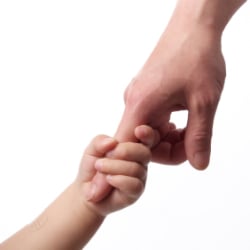
Helping your child deal with pain
23 August 2006
Suffering from aches and pains is part of life, but pain left untreated may cause fear, anxiety, and other symptoms. It is important to recognize and manage your child’s pain because it will make him feel better and recover more quickly from an illness.
Recognizing pain
Pain symptoms vary depending on your child’s age and level of development. He might cry, be fussy, be less active, be unwilling to move, be unable to sleep, or appear to sleep all the time. Each child has his own special way to deal with stress and pain, and parents should try to recognize their child’s response to pain.
Managing pain
There are many ways to help reduce your child’s pain and anxiety, from relaxation techniques to medication.
Non-medical methods
- Imagery: Children can often use their imaginations to alter the feeling of pain and to gain a sense of control over it. A Child Life specialist from The Children’s can teach you more about guided imagery to help your child.
- Cold: Cold packs or cloths help reduce swelling and short-term pain. Place cold packs wrapped in a thick cloth on the sore or swollen area for 10 minutes every hour. Be careful when your child has nerve damage or a skin injury. Use cold packs and cloths on infants and small children only as directed by your doctor.
- Heat: Warm water baths, compresses, and water bottles soothe aching muscles, stiff joints and muscle spasms. Ask your doctor or nurse for instructions in applying heat. Do not put heat on recent injuries or surgical areas and never microwave warm compresses.
- Massage: Putting warm lotion or oil in your hands and rubbing sore areas will help relax your child’s tight muscles and relieve spasms.
- Music: Music gives your child something to focus on besides the pain and helps pass the time pleasantly. You can sing to your child, play tapes, an instrument, or have your child sing.
- Touch: Holding, gentle patting, rubbing, and stroking are touches that show support and comfort. Patting works well for infants and younger children and may remind them of comforting routines. Rubbing or stroking your child’s back, arms, legs or feet helps him focus on something pleasant.
- Language: Tell your child you see he is in pain. Use words that show support, hope, love, encouragement, and understanding. Use a calm, soothing tone of voice. Remind your child that his pain is being treated and will come to an end.
- Relaxation: Deep breathing and relaxation techniques can help relieve pain and anxiety. Children can pretend they are “wet noodles” to relax tight muscles, or they can tighten and relax muscles from head to foot. Counting breaths and focusing on slow breathing also helps. Blowing bubbles is also a fun way to relax and focus on other things.
Over-the-counter medications
You can purchase over-the-counter medicines without getting a prescription from your doctor. They are effective and reliable options to help manage your child’s pain. Using an analgesic such as acetaminophen (e.g. Tylenol®) is a very effective and safe way to treat pain if taken as recommended.
Remember, many prescription pain-relieving medications also contain acetaminophen. Other effective analgesics, such as ibuprofen (Advil® and Motrin®), have anti-inflammatory properties and can be useful in relieving certain kinds of pain (headache, muscle aches and arthritic/joint pain or pain from some types of surgery). Talk to your pharmacist before giving ibuprofen to your child since it may react with other medications your child is taking.
Pain medications take time to work, so treat pain early. Do not wait for the pain to become bad. If you have any questions about the best medication to give your child ask your doctor, nurse or pharmacist.
Dealing with painful or frightening medical procedures
If your child is scheduled to have a painful or frightening procedure, it is important to explain to him what will happen. If you don’t tell him in advance it may make things worse and have negative effects on future experiences.
09-01-06 Montreal Children’s Hospital – SW
